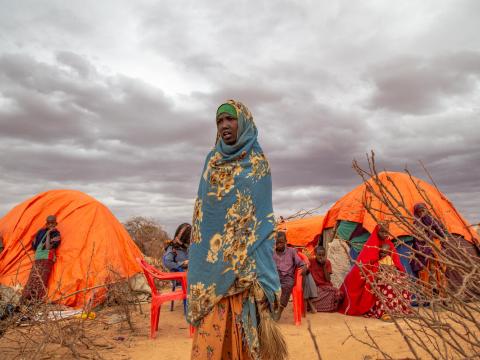An Optional Climate Loss and Damage Fund for rich countries simply isn’t Cricket
Brit, Jason Garrett, finds parallels between international cricket and mitigating climate change, and warns children are most at risk.
22 November 2023
With apologies to those who follow other sports, or don’t follow sport at all, but in recent weeks I have been following the Cricket World Cup. Being English, the performance of the England team has not been very encouraging, and with every loss has come even more damage to our sporting reputation. But it has also been exciting to see the performances of other teams, especially those with fewer resources and less experience at this level.
It has also helped me think about the upcoming COP28 meetings, which are being held in Dubai at the end of November and into early December. One of the key issues being agreed at COP28 is the final details of the Loss and Damage Fund, which was first announced last year at COP27. The 2022 IPCC Report showed that whatever actions are taken there are some climate impacts that are already unavoidable, and so there needs to be a mechanism in place to provide funding for where climate disasters have caused both economic and non-economic losses and damage to infrastructure, property and human lives and livelihoods.
Many countries and communities around the world are facing loss and damage from climate-related disasters, and these are far more serious than the trials and tribulations of a few over-paid athletes. However, there are parallels.
The Cricket World Cup is designed to benefit larger countries that have more resources and a longer tradition of playing at the top level. From the initial draft designs of the new Loss & Damage Fund, it appears that it is being designed more in the interests of the donor countries than the most vulnerable countries and communities, who will be the ones facing the greatest threats from climate change related disasters. There is concern that the fund will not raise enough money to cover the costs that will be faced by the most vulnerable countries, with rich countries only being ‘urged’ to contribute to the fund, so relying on voluntary contributions from the countries with the longest history of greenhouse gas emissions.
For child focused organisations such as World Vision, there is also a concern that the fund is not designed to address the specific impacts of climate change on children, nor have fund architects listened to children’s voices as part of the design process. Given that only 2.4% of climate finance allocations up until now have incorporated child responsive activities it is perhaps not surprising, although disappointing, that the new Loss & Damage Fund has not taken account of children’s particular needs and vulnerabilities.
So World Vision, along with other members of the ‘Child Rights Climate Movement’ are calling for the Loss and Damage Fund to:
- Include a specific reference to children and their rights
- Ensure that it is child responsive and prioritises children who are already experiencing the worst effects of climate change in their communities
- Include the provision of grants and direct access to community-based organisations and children’s groups, to make access to climate finance more inclusive and equitable.
Returning to the Cricket World Cup, it has been hosted very well by India and has brought joy to millions of people, including children. The question for the leaders and experts participating at COP28 is whether they can create as successful an event, and whether the outcomes will bring as much hope and joy to children as a cricket tournament -- especially for those on the front line of the climate crisis.
Jason Garret is World Vision UK’s senior resilience programming advisor. He will be helping raise the voices of children affected by the climate crisis and advocating on their behalf at COP28 in Dubai.
Learn more about World Vision at COP28
Picture caption: Ruji and his friends playing cricket in Bangladesh.

